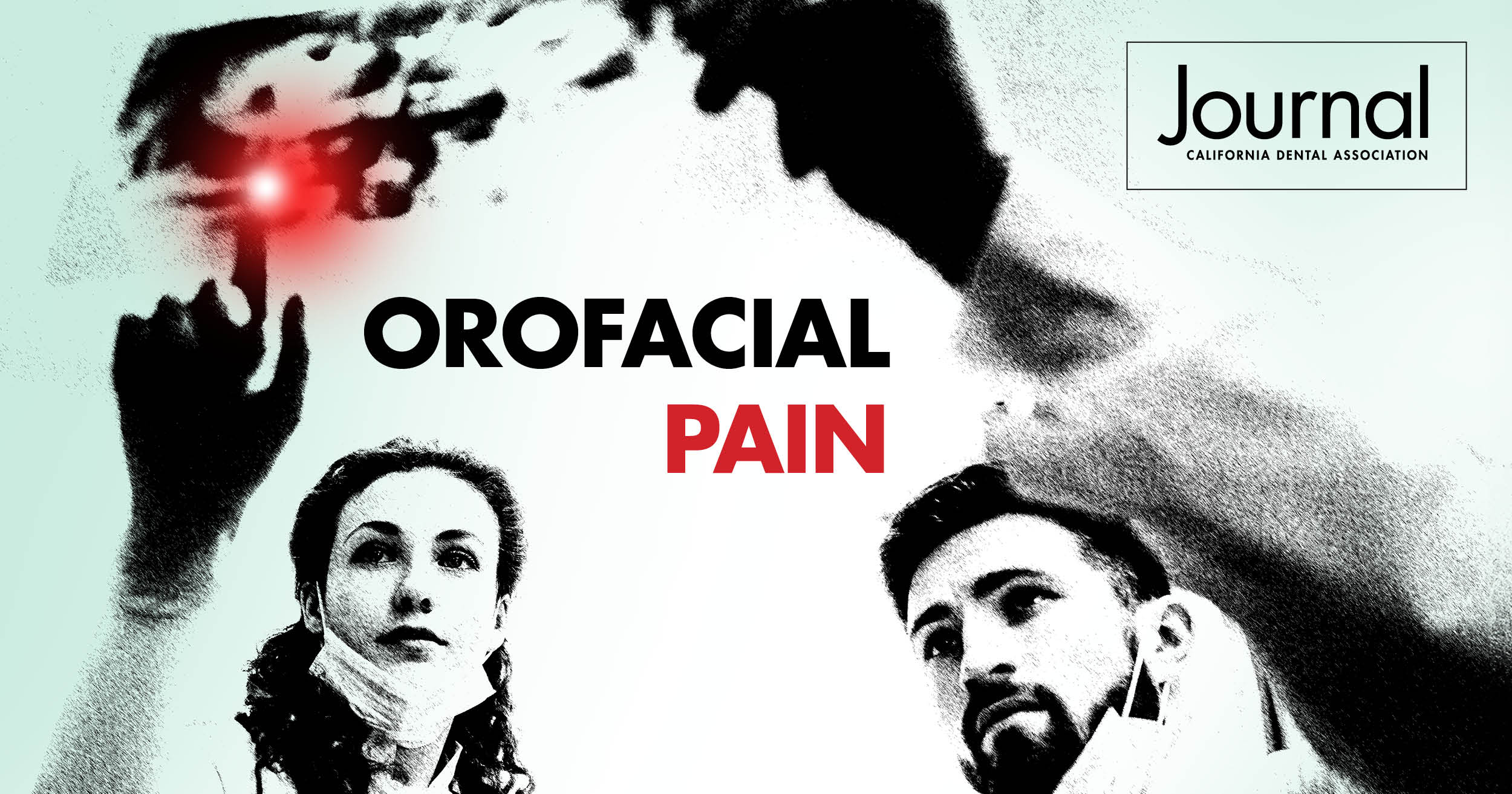In Orofacial Pain, the latest collection of the Journal of the California Dental Association, three articles highlight the quickly evolving landscape of orofacial pain with a special focus on the importance of the field’s recognition as a dentistry specialty, the need for shared, clear and consistent terminology within and across professions and the significance of collaborative, interprofessional care.
“Historically, the field of orofacial pain has benefited from a fierce group of tireless, forward-thinking leaders striving for the betterment of the specialty and dental profession,” writes Nicole Holland, DDS, MS, in the introduction. “My hope is that this collection serves as a call-to-action to be intentional in how we move forward as a profession as we strive to optimize orofacial pain care for all.”
Dentists can earn C.E. credit by reading a case report on diagnosing non-odontogenic sources of dental pain and successfully completing an online quiz.
Strategies to improve access to care for orofacial disorders
Despite the recognition of orofacial pain as a specialty in 2020, access to care for patients with oral lesions, xerostomia, temporomandibular disorders, burning mouth and other conditions is limited due to many barriers to care, including an insufficient number of providers who specialize in orofacial pain and oral medicine.
In “The New Specialties of Orofacial Pain and Oral Medicine: Practical Strategies to Improve Access to Care for Orofacial Disorders,” co-authors Drs. James Friction and Nelson L. Rhodus review the progression of orofacial pain, TMD and other conditions and examine the impacts of limited access to care and education as well as insufficient health care plan reimbursement on the achievement of best long-term health outcomes.
The authors offer solutions for improving access to effective, affordable, quality care for oral and facial disorders to prevent complications, chronic pain and the negative impact on individuals’ lives but conclude that “there is still much work to do to develop these specialties, including building clinical practices, improving health plan reimbursement and ensuring that all state boards of dentistry recognize the need to train existing health professionals and encourage licensure for specialists in the field.”
Diagnosing chronic orofacial pain: A case report and review of ICOP-1
The comprehensive International Classification of Orofacial Pain, 1st edition, can help dentists determine the cause of dental pain, which can be challenging even for experienced dentists when the patient has atypical or unusual dental pain symptoms.
In “Diagnosing Non-Odontogenic Sources of Dental Pain: A Case Report and Review of the International Classification of Orofacial Pain, 1st Edition,” co-authors Drs. Ifrana Zaman, Shaiba Sandhu and Roxanne Bavarian discuss the case of a patient presenting with chronic orofacial pain and review the clinical features and diagnostic tests that help distinguish between odontogenic and non-odontogenic pain as defined by the ICOP-1.
Dentists who read the article and successfully complete an online quiz can earn 0.5 units C.E. credit.
Managing chronic orofacial pain via interprofessional teams
Dental professionals often are the first contact for patients suffering from orofacial pain, but patients may seek care from other providers due to the location or complexity of their pain.
Co-authors Drs. Kelly M. Wawrzyniak, Ronald J. Kulich, Shuchi Dhadwal and Naila Ahmed use the case of a patient with complex chronic orofacial pain to demonstrate the challenges for patients who receive sequential or siloed care.
They conclude that dentists’ and patients’ best interests are served when dentists develop collaborative relationships and have roles on interprofessional teams to coordinate and treat chronic orofacial pain.
can see from this example, patients with these complex presentations could benefit from additional evaluation with relevant specialists, such as a neurologist, physical therapist, and sleep medicine specialist to further clarify the diagnoses and to develop one comprehensive treatment plan,” the authors write in “Interprofessional Management of Chronic Orofacial Pain: A Topic Review, Steps to Improve Collaborative Care, and a Case Example.”
Latest scientific dentistry news
Also in this collection, Impressions brings the latest scientific dentistry news including research on eggshell membrane’s potential in bone regeneration, the reduction in pneumonia and ICU mortality in hospitalized patients who brush their teeth daily and the decline in the oral health of patients who undergo surgical obesity treatment.
Read the full CDA Journal collection, Orofacial Pain.

